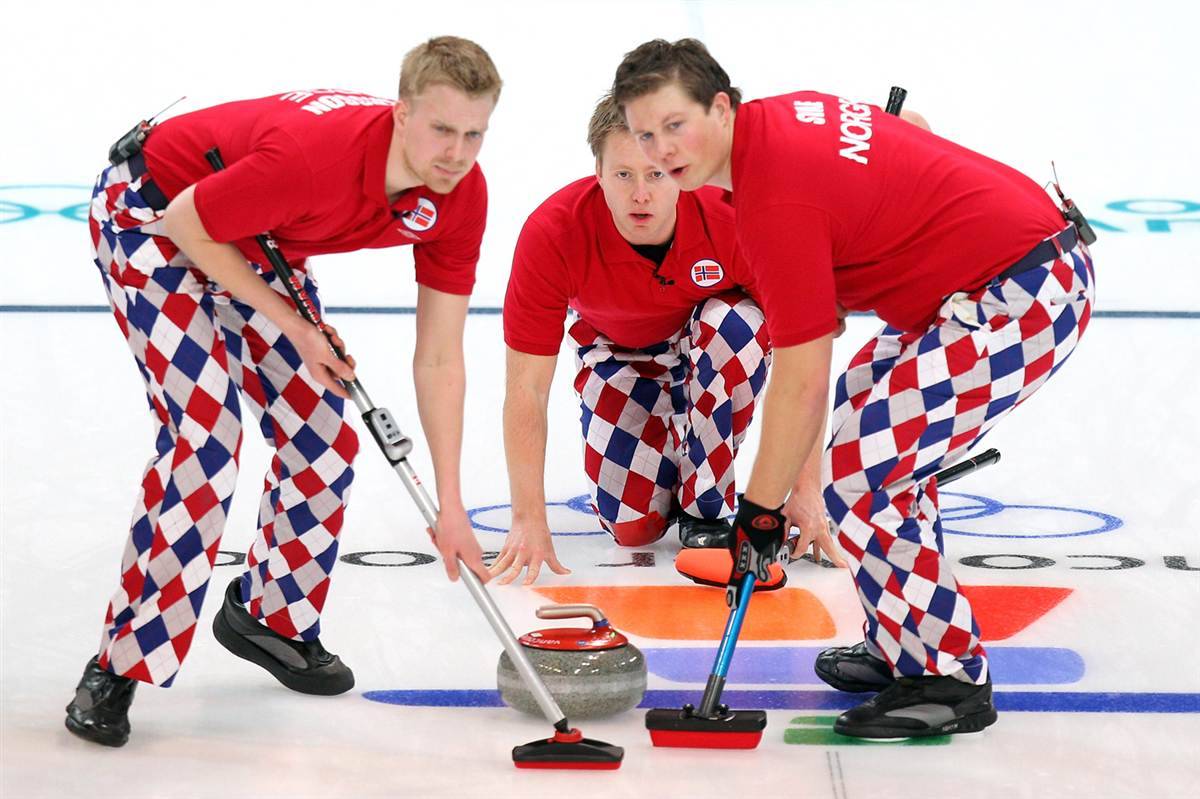Curling is a deceptively engrossing sport with some unique physics among Winter Olympic events. Athletes slide 19kg granite stones at a target 28 meters away. Along the way, teammates sweep the pebbled ice with brooms, melting it with frictional heating to help the stone slide further. The underside of the stones is concave, so they only touch the ice along a narrow ring. Researchers think roughness in the leading edge of the sliding stone cuts into the ice, leaving scratches that the trailing edge tries to follow. This is what causes the stone’s trajectory to curl. By melting the ice, sweeping also prevents curling, so competitors must know exactly when and how much to sweep. Ice conditions shift throughout a match, and the best players can read the ice to keep their stones where they want them. (Image credit: AP; W. Zhao/GettyImages)
Tag: curling

Sochi 2014: Curling
Curling is rather unique among target-based sports because it allows athletes to alter the trajectory of their projectile after release. Curlers send 19 kg granite stones sliding across a pebbled ice surface at a target 28 meters away. On the way, teammates sweep the ice with natural or synthetic brushes. Sweeping the ice causes frictional heating, which lowers the local coefficient of friction and allows the stone to slide meters further than it would without sweeping. The bottom of the stone is concave, so the rock only contacts the ice along a narrow ring. One explanation for the stone’s tendency to curl in the direction it spins comes from this contact ring. Researchers suggest that the roughness of the leading edge cuts scratches into the ice which the trailing edge attempts to follow, causing the stone to move laterally, as illustrated over at Smarter Every Day. It’s important to note that the sweeping curlers do doesn’t directly guide the stone. In fact, by lowering the coefficient of friction the sweepers prevent the stone’s curling, and thus much of the skill of the sport is in knowing when, how, and how much to sweep. (Photo credit: C. Spencer/Getty Images)
FYFD is celebrating #Sochi2014 by studying the fluid dynamics of the Games. Check out some of our previous posts including how to make artificial snow, the aerodynamics of bobsledding, and how ski jumpers fly further.


